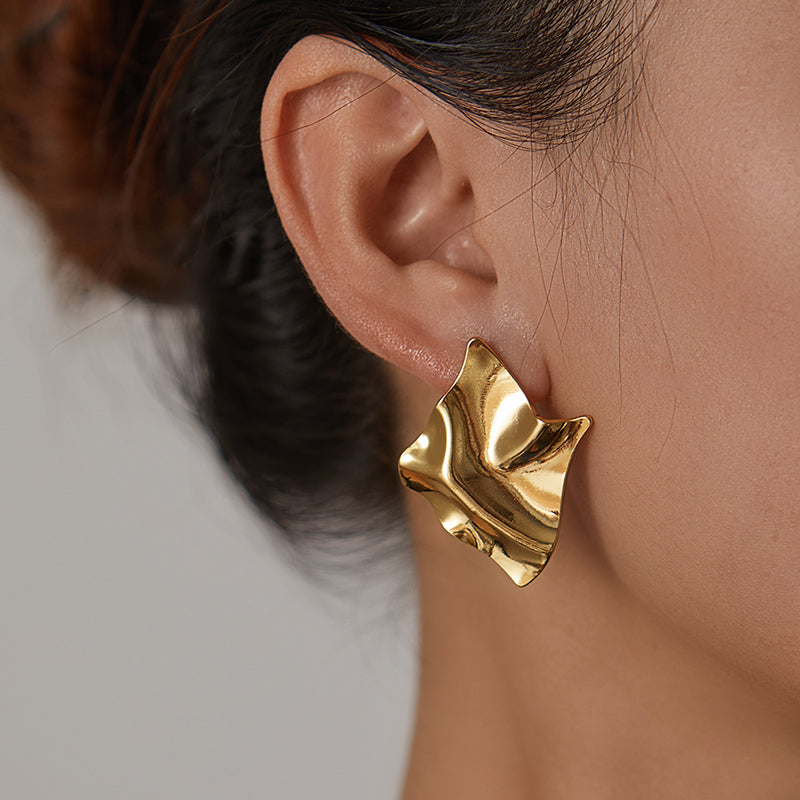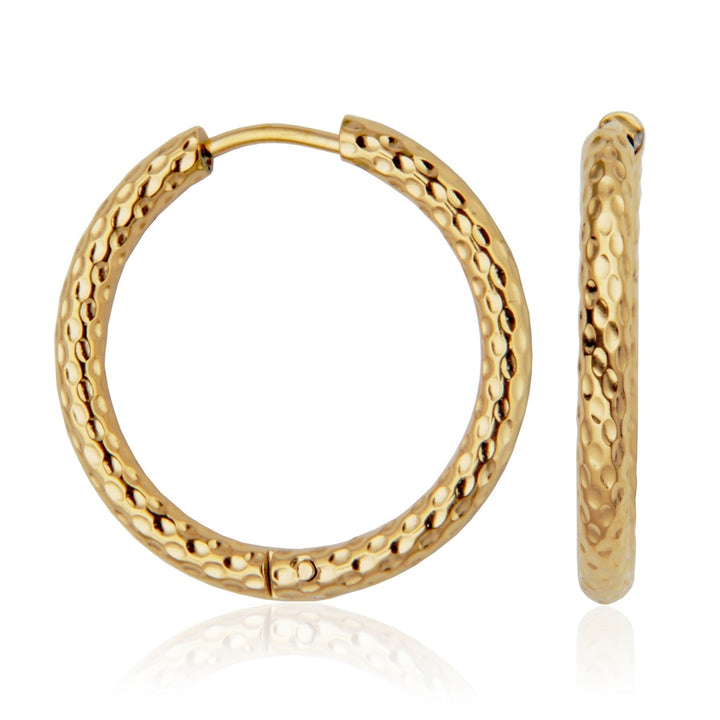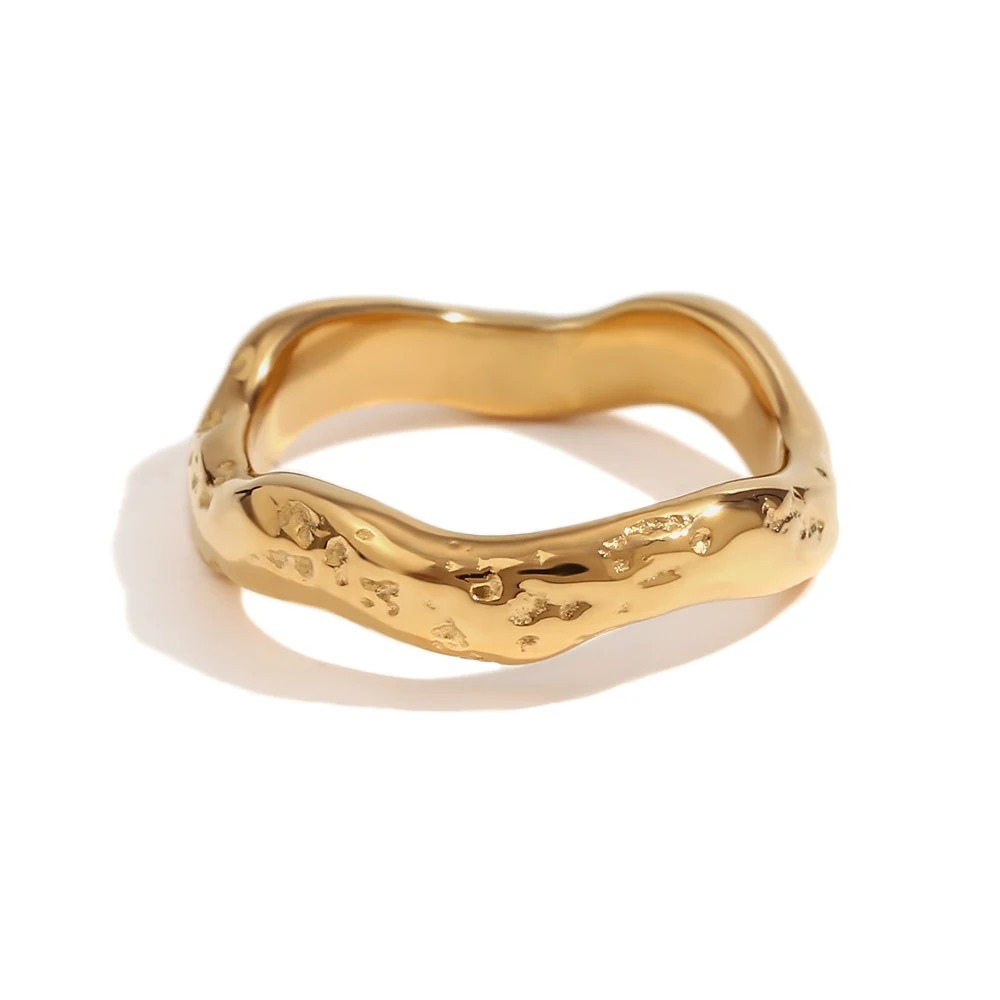
The Benefits of Choosing Waterproof, Hypoallergenic and Resistant Jewelry
When investing in jewelry, you want it to maintain its beauty and quality over the long term, while being comfortable to wear every day. Among the many criteria to consider, waterproof, hypoallergenic, heat-resistant and rust-resistant properties are particularly important to ensure optimal durability. Materials such as stainless steel, 18K gold plating and 925 silver stand out for their qualities, offering jewelry that is both elegant and practical for everyday use. Here is an overview of the advantages of these materials.
1. Stainless Steel: All-Terrain Durability and Resistance
Stainless steel is one of the most popular materials for jewelry, and for good reason.
- Waterproof
Stainless steel is naturally waterproof. It won't rust or corrode, even after prolonged exposure to moisture, sweat, or salt water. Whether you're wearing it at the beach, in the shower, or during a workout, stainless steel jewelry will maintain its shiny appearance without requiring any special care.
- Hypoallergenic
Good quality stainless steel, such as 316L stainless steel, is hypoallergenic. It is perfectly suitable for sensitive skin, as it does not contain nickel or other components that can cause allergic reactions. This makes it an excellent choice for people who suffer from allergies or skin irritations due to certain metals.
- Heat resistant
Stainless steel is also known for its heat resistance. Unlike some materials that can warp or lose their shine under high temperatures, stainless steel remains intact. This makes it an ally for people living in hot climates or exposed to heat sources (such as professional kitchens).
- Rust resistant
As its name suggests, stainless steel does not rust. Thanks to a thin protective layer of chrome, this material resists oxidation, even in humid conditions. A piece of stainless steel jewelry will therefore keep its shine and strength over the years.
2. 18K Gold Plated: Affordable Luxury and Long-Lasting Protection
18K gold plating combines the luxurious aesthetic of gold with enhanced durability, making it perfect for elegant jewelry at a more accessible cost.
- Waterproof
Unlike pure gold, which is a relatively soft metal, 18K gold plating offers increased water resistance due to the base often being made of metal such as stainless steel or brass. Good quality gold plated jewelry can withstand occasional exposure to water, but it is advisable to avoid regular and prolonged contact to ensure that the plating remains intact and shiny.
- Hypoallergenic
18K gold plating is generally well tolerated by sensitive skin, especially when combined with a hypoallergenic base such as stainless steel. Since 18K gold is purer than low-karat alloys, it contains fewer irritating metals such as nickel, reducing the risk of allergic reactions.
- Heat resistant
While pure gold is sensitive to heat, gold-plated jewelry, especially when made on a solid metal base like stainless steel, is more heat resistant. It retains its shape and shine even in warmer environments.
- Rust resistant
Gold plating, when of high quality, benefits from protection against rust thanks to the thin layer of gold covering the metal base. If the jewelry is well maintained, avoiding too frequent exposure to water and chemicals, it will remain resistant to oxidation.
3. 925 Silver: Elegance and Longevity
925 silver, or sterling silver, is a combination of 92.5% pure silver and 7.5% other metals, usually copper. It is valued for its classic, timeless shine, but also for its strength.
- Waterproof
Although 925 silver can withstand water, it is slightly more vulnerable to oxidation than stainless steel. Regular exposure to water, especially salt or chlorinated water, can cause slight tarnishing. However, this oxidation is superficial and can be easily cleaned to restore the silver's original shine.
- Hypoallergenic
925 silver is hypoallergenic and well tolerated by most people, except for the rare people allergic to copper or other metals present in small quantities in the alloy. Compared to less noble metals, sterling silver is much less likely to cause irritation or allergic reactions.
- Heat resistant
925 silver is relatively heat resistant, although less so than stainless steel. It does not warp easily, even under moderate heat, making it a reliable choice for everyday jewelry.
- Rust resistant
Although 925 silver does not rust, it can tarnish over time due to oxidation in the presence of sulfur in the air. Fortunately, this tarnish is easily reversible with regular cleaning and proper care products. However, it will never rust like iron or other non-precious metals.
Conclusion
Whether it’s their water resistance, their ability to prevent allergies, or their longevity against heat and rust, stainless steel, 18K gold plating, and sterling silver each stand out with their own unique benefits. Stainless steel is perfect for those looking for a durable, maintenance-free option. 18K gold plating offers an affordable alternative to solid gold while maintaining a luxurious look and good tolerance for sensitive skin. Finally, sterling silver combines timeless elegance with quality, although it requires a little more maintenance than steel.
These materials not only guarantee you aesthetic and comfortable jewelry to wear, but also great durability over time, even when faced with varied usage conditions.



